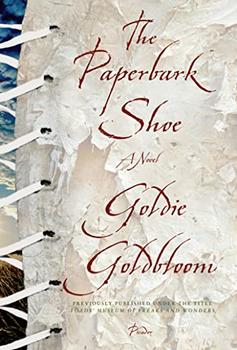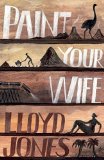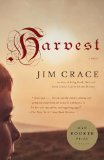Summary | Excerpt | Reading Guide | Reviews | Beyond the book | Read-Alikes | Genres & Themes | Author Bio

A Novel
by Goldie GoldbloomWe've all experienced the loneliness of exclusion. If we differ too much, veer too far from society's expectations, we're considered inferior in some way. And if we're inferior we may be ostracized, ridiculed, taunted, even distrusted or shunned outright. The desire to make ourselves feel more important by bringing others down is a sad truth of the human race, a universal theme, just as the hurt we receive at the hands of others can last a lifetime.
Fiction is filled with examples of outsiders and those who ostracize them. In The Paperbark Shoe (originally published in hardcover as Toads' Museum of Freaks and Wonders), Goldie Goldbloom uses WWII - the ultimate example of prejudice - as a backdrop, making it authentically specific to Australia with the inclusion of Italian prisoners of war, distrusted and excluded, who were sent to Australia to provide free help for farmers until the war's end.
Drawing readers further into this theme of isolation, are the two main characters: Toad, whose unattractiveness and proclivities for cross-dressing and collecting women's corsets make him a pariah in his home village; and Gin, the woman he marries - an educated, classically-trained pianist he rescues from a mental institution. Having been tucked away by a wealthy stepfather who despises her, she accepts Toad - a rough, uncultured man she would have laughed away had she not been born an albino and rejected as a freak of nature - as her sole ticket out. And so she chooses to marry a man she barely knows, leaves a life of gentility, and travels to a strange and forbidding land - the dry, dusty Australian Wheatbelt - where, ironically enough, she is still considered an outcast, both for her appearance and for having married Toad, and is relegated to the outskirts of society.
The qualities that set characters like Gin and Toad apart from the rest are precisely what draw the reader in, hooking interest and cementing affection for two rejects who are so realistically drawn, they seem to pop off the page. Caring about them and those they love, despite their flaws, comes easily. When things are good, providing their lives with little moments of joy, their happiness is our happiness. When times are tough, we feel their pain. Though life on a brutally arid Australian farm may be unfamiliar to readers, what attracts our empathy is not, because we can all relate to their humanity.
Had the characters been less quirky, less oddball, they may not have had the same power to move readers. Our hackles rise when they are derided by the other villagers because we've seen what's inside them, and we know their appearance doesn't match their true beauty and sensitivity. Raised privileged and unused to back-breaking work, Gin is a woman ostracized who soon finds her true strength battling the forbidding land alongside her husband. And Toad, though his treatment of Gin in some ways mimics the distaste of others (e.g. his reluctance to touch her), feels love for her deep down, in his own way.
Seeing the two of them judged for superficial reasons rouses outrage; it nudges readers' feelings of "freakishness," and draws on instances of insecurity we've all known too well. Not to say that their experiences have rendered any of the characters perfect; their trial by fire has not purified them. Sins are committed on all sides, fidelity strained, and deep hurt inflicted by people who have come to need each other. Loyalties are tested, and the temptation to want more than they have is still a very real urge. Well-drawn characters are neither all good, nor all bad, as we see with Gin, Toad and others in the book. As in life, even those who have known the pain of rejection, themselves reject.
It's crucial for an author to create a connection between her characters and the reader, and, though we might not be like them physically, it's easy to see ourselves in Gin and Toad, to recognize the times we've taken those we love for granted, times when the grass has seemed greener elsewhere, and we believe we deserve more than we have. At once, we may find ourselves forgetting what sets them apart from us and recognizing how similar all humans are beneath the exterior. Thus the accomplishment of this novel.
The Paperbark Shoe is a miracle of a book - so perfect, it is astonishing that it's Goldie Goldbloom's first. Along with the characters, we experience sweat and toil, success and defeat on unforgiving land, and we mull over the pain of the injustices we all wreak on each other. The relief we may feel because we aren't physically like Gin and Toad is made moot when we remember that what binds us all is a shared human nature.
In actuality, we are all Gin and Toad, mortals subject to giving and receiving the same hurts. But the lesson here, the ultimate salvation, lies in the potential for redemption. What we have done in the past, matters less than what we're willing to do in order to remedy it, and our sins do not define us any more than our outward appearances. And though we can't be absolved from everything, we can practice the humility necessary to make things right. Or at least try, in hopes that the humanity we give away is the same we receive in return, and that we are forgiven just as we've learned to forgive, passing along the message that we are all in this together.
![]() This review
first ran in the June 15, 2011
issue of BookBrowse Recommends.
This review
first ran in the June 15, 2011
issue of BookBrowse Recommends.

If you liked The Paperbark Shoe, try these:

by Lloyd Jones
Published 2016
Paint Your Wife is a colorful, sensual novel, brimming with rich stories and even richer characters.

by Jim Crace
Published 2013
In effortless, expertly crafted prose, Jim Crace details the unraveling of bucolic life in the face of economic progress. His tale is timeless and unsettling, evoking a richly textured world you will remember long after you finish reading.
Your guide toexceptional books
BookBrowse seeks out and recommends the best in contemporary fiction and nonfiction—books that not only engage and entertain but also deepen our understanding of ourselves and the world around us.